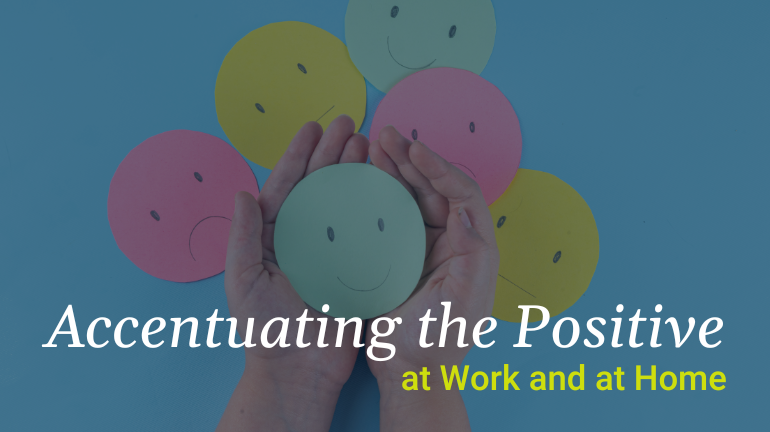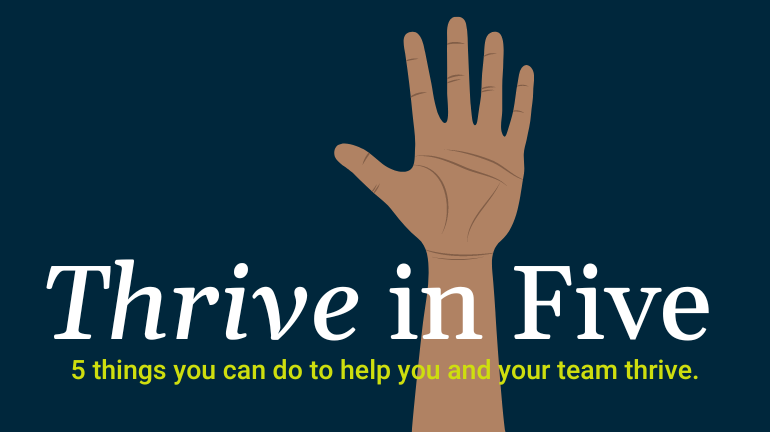Accentuating the Positive at Work and at Home

We all know how easy it is to reflect on challenging situations and replay all the negative or upsetting moments over and over again. What if, instead of getting caught up in what’s wrong, you could shift your focus to what’s right? Positive Psychology offers powerful tools to help you thrive both at work and at home by emphasizing your strengths and leveraging them to overcome challenges. This dynamic approach is all about cultivating a mindset that fosters resilience, optimism, and contentment.
What is Positive Psychology?
Positive Psychology, coined by Martin Seligman in the late 1990s, diverges from traditional mental health practices that often focus on identifying and fixing weaknesses by highlighting and nurturing people’s strengths. The goal is not to eradicate challenges but, rather, to develop the emotional and social resilience needed to tackle them with confidence.
Key Concepts:
- Thriving vs. Suffering: Focus on what makes you flourish, not just survive.
- Strengths vs. Weaknesses: Leverage what you’re good at to overcome obstacles.
- Optimism over Pessimism: Approach life with a positive outlook.
- Contentment over Happiness: Aim for a sustainable sense of well-being rather than fleeting happiness.
A Change in Perspective
Your perspective significantly impacts how you approach life’s challenges. Taking a positive approach helps you turn obstacles into opportunities, making you more resilient and capable of problem-solving. Conversely, taking a negative approach can make even small challenges seem insurmountable.
How to change your perspective:
- Identify and Nurture Strengths:
- At Work: Conduct regular strengths assessments and align tasks with team members’ natural talents.
- At Home: Focus on activities that you and your family excel at and enjoy.
- Find Something Good in Difficult Times:
- At Work: Celebrate small wins and recognize effort, even in tough projects.
- At Home: Practice gratitude by sharing one positive thing that happened each day.
- Reframe Negative Language:
- At Work: Replace “I can’t handle this” with “This is a challenge, but I can find a solution.”
- At Home: Change “I’m always late” to “I’m working on improving my punctuality.”
- Seek Fulfillment by Finding Meaning:
- At Work: Align your tasks with the broader mission of your organization.
- At Home: Engage in activities that bring you joy and a sense of purpose.
A Change in Conversation
Choosing words carefully to avoid constant negativity can dramatically improve our personal and professional self-confidence. By reframing discussions and using intentional language, we can create an environment that bolsters perceptions of both our team and ourselves.
How to reframe your language:
- Bolster Perceptions of Team and Self: Language shapes our reality. When we use positive and constructive language, we inspire confidence and foster a sense of capability within our team and ourselves. Instead of saying, “We’re facing too many problems,” try, “We are encountering challenges that will help us grow.”
- Accept “The Good” as Much as “The Bad and the Ugly”: It’s easy to dwell on negative aspects while overlooking sitive achievements. Make an intentional effort to acknowledge and appreciate successes and strengths regularly. For instance, replace “This didn’t work out” with “This part of the project was successful, and we learned valuable lessons for next time.”
- Encourage Progress Rather than Prohibit Effort: Focusing on what can be done promotes a culture of growth and development. Use language that encourages action and progress. Swap “We shouldn’t do it this way” with “Let’s explore alternative approaches that might work better.”
- Become Aware of the Words You Say to Yourself: Self-talk plays a crucial role in shaping our self-image and confidence. Pay attention to your internal dialogue and strive to reframe negative thoughts into positive ones. Instead of thinking, “I always mess up,” try, “I am learning and improving with each experience.”
By consciously choosing our words with care and intent, we can reframe our mindset, foster a positive environment, and drive both personal and professional growth.
A Change in Mindset
Appreciative Inquiry is an approach that focuses on what is good, better, and possible. It encourages looking at the big picture and fostering an appreciative culture within organizations. By shifting perspectives, conversations, and mindsets from problems to strengths, it quickly creates a new dynamic where people unite around a hopeful shared vision of the future.
How to apply Appreciative Inquiry:
- Focus on Solutions rather than problems.
- Invest energy in “what went right” instead of “what went wrong.”
- Use lessons learned for “do more of that” instead of “don’t do that.”
- Grow what’s good by identifying and amplifying success stories within your team or family.
Positive Psychology is not just a feel-good philosophy; it’s a practical toolkit for enhancing your life both professionally and personally. By focusing on your strengths, adopting a positive mindset, and using approaches like Appreciative Inquiry, you can create a thriving environment for yourself and those around you.







